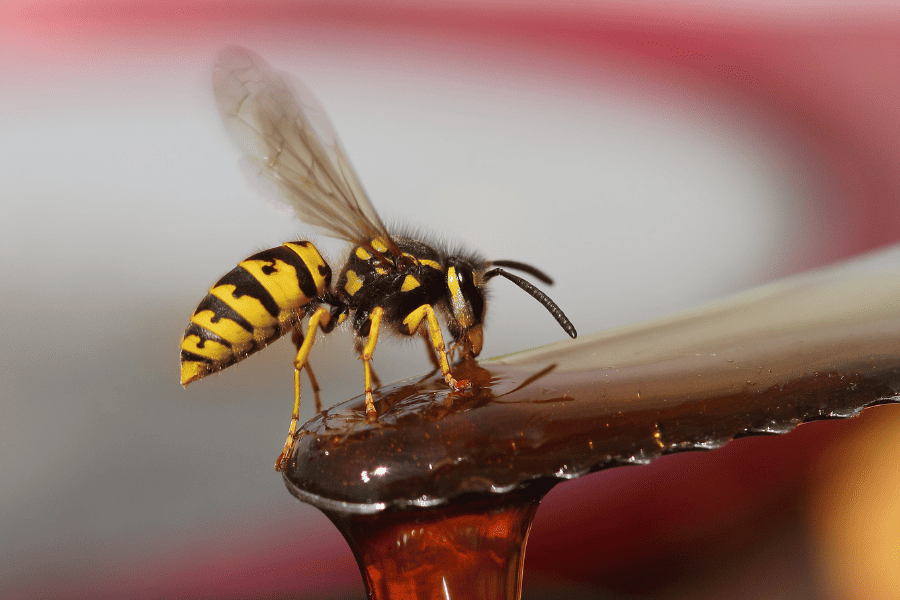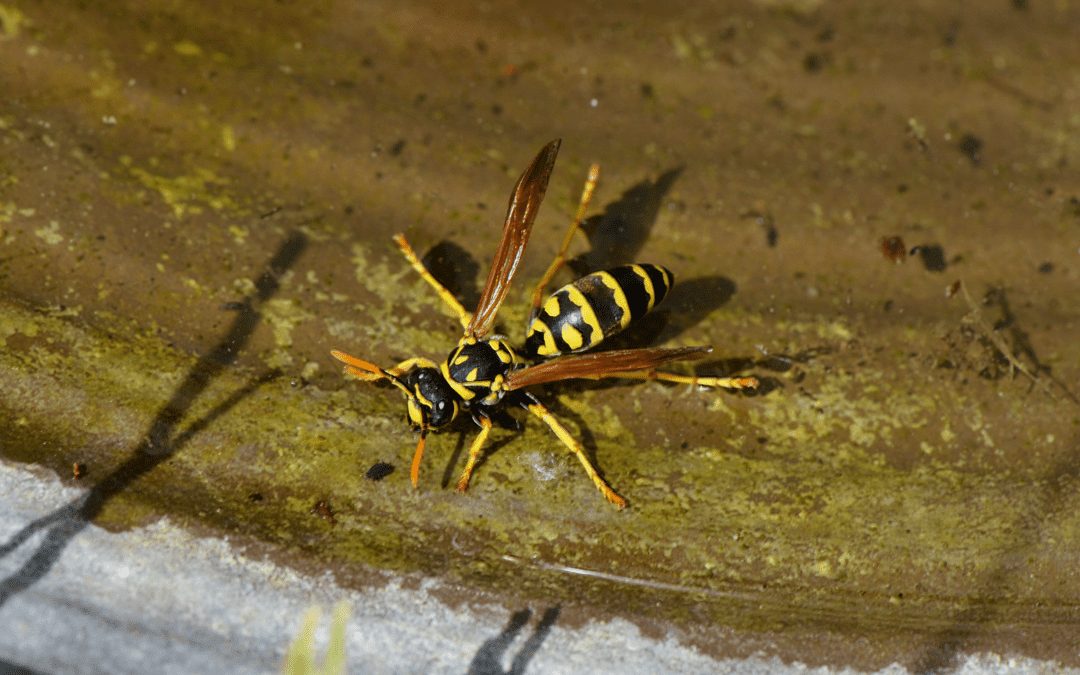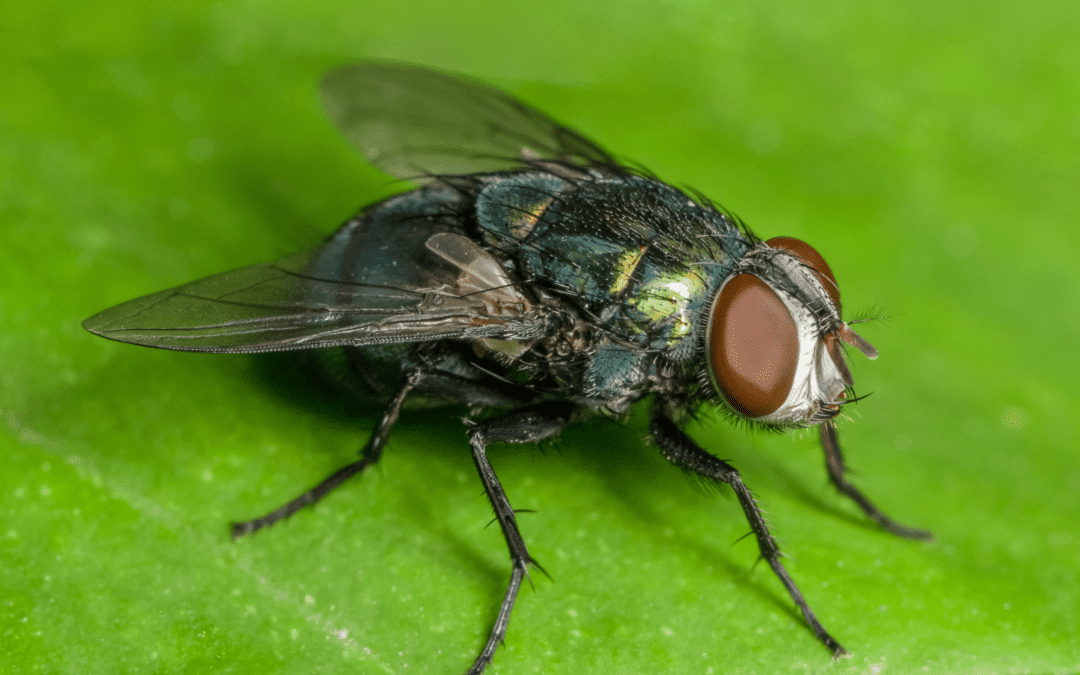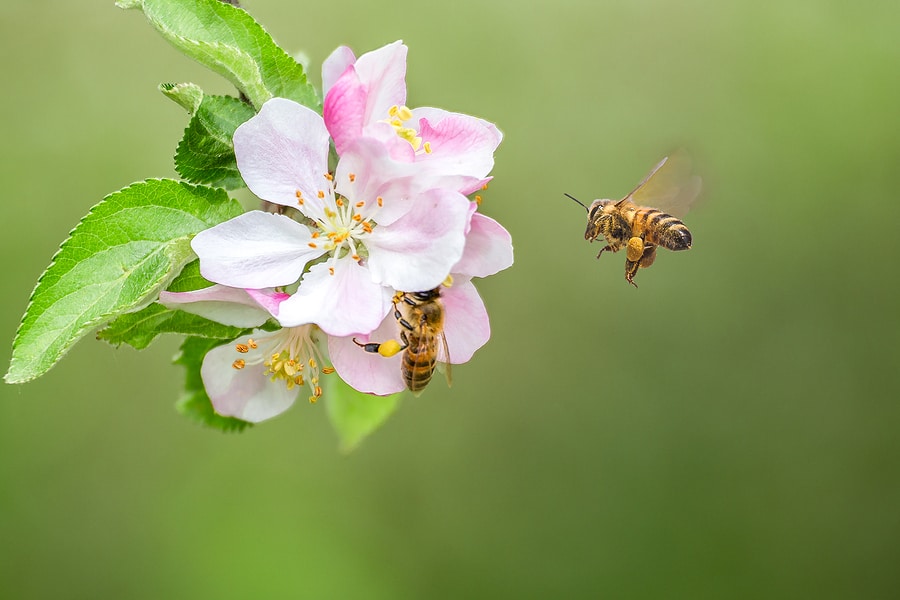READY TO GET STARTED?
REQUEST A FREE ESTIMATE
Fill out the form below or call (336) 226-1448 for a free, no-obligation estimate.

North Carolina is home to a variety of stinging pests, including wasps, hornets, yellow jackets, and fire ants. These pests can turn into a problem during the summer months, as they are more active and likely to sting. In this blog, you will discover the several types of stinging pests found in your area and the ways you can prevent them from stinging you!
If you do experience a problem with stinging pests, consider contacting your local pest control company for an effective treatment.

Are stinging pests interfering with your summer barbecues? Stinging pests are most active in the summer and can impact your family’s fun. Check out these common stinging pests and the best way to avoid them!
These pests are a bit larger than most stinging pests and can range from 3/4” to 1-3/8” long, with brown and yellow abdominal stripes on their body. Their nests are often built in hollow trees and the walls of houses and attics, although they prefer a forested environment. Hornets are attracted to light and can fly to your windows at night if they see a light on. They are relatively non-aggressive near the nest, but there is potential for a stinging hazard if threatened.
Wasps are busy at work scavenging for food during the summer months. They typically build their nests in branches, porch ceilings, eaves, and attic rafters. You will find these pests highly attracted to backyard barbecues, increasing your chances of being stung. Wasps will sting multiple times if they feel threatened enough. They can also call in reinforcements from other wasps by emitting pheromones.
These social insects are anywhere humans are found. They measure 3/8” to 5/8” long and have a non-fuzzy black and yellow body. Yellowjackets feed on sweets and proteins; therefore, they commonly invade outdoor events. They can build their nests in either high places or in the ground. Examples include shrubs, garages, timber, logs, and more. If threatened, yellowjackets will sting multiple times, causing extreme pain and possible allergic reactions.
If you encounter these stinging pests, don’t swat them away. This action can provoke an attack. The best thing to do is to remain calm and they should fly away. If you suspect a stinging pest problem near your property, contact your local pest control company for a treatment and prevention plan.

Household pests are any undesired animal that has a history of living, invading, causing damage to, eating food from, acting as a disease vector for, or causing any other harm to a human habitat. While many are just considered a nuisance, some household pests can become dangerous as they pose a risk to health, property, and lifestyle. Also, household pests aren’t just limited to insects. They include arachnids, rodents, and wildlife.
While household pests can be found year-round, some are more common in the summer months. Here are four of the most common summer pests and how you can prevent them.
Mosquito season peaks during the summer months. Mosquitoes are able to reproduce in large numbers due to the warm weather and humid environments that accelerate their life cycle. If you have standing water on your property, you will most likely see mosquitoes since this is where they lay their eggs. Mosquitoes can be dangerous to humans as they carry pathogens that can cause serious diseases such as Zika and West Nile virus.
Mosquitoes can be prevented by:
Ants hibernate in the winter and come out in full force during the summer. Ants are usually seen indoors during the summer because they’re searching for food and water as these can become scarce for them. They are also building up their reserves for the fall and winter months.
Ants can be prevented by:
Termite swarming season is in the spring, but these newly established colonies grow exponentially in the summer. Termites can go long periods of time undetected. This allows them to cause significant damage to your home. It’s important to keep an eye out for signs of termites so you’re able to catch them early.
Termites can be prevented by:
Flies invade your home in the summer months to escape the heat. While they only reproduce during the hotter months, getting indoors allows them to do so even more prolifically.
Flies can be prevented by:
Don’t let these common pests ruin your summer. If you have a problem with any of these pests, contact your local pest control company. They will be able to help eliminate them safely and prevent them going forward.

Regardless of the season, pests are always in search of shelter and food. One place that provides them with both of these is your home. Different seasons bring different pests in varying stages of their life cycles. It’s important to know the patterns for these seasonal pests in your area to make the proper preparations for your home. What can you expect as each season changes throughout the year?
Winter
For most pests, winter is a time of hibernation and survival. The colder weather triggers a need for overwintering pests to find shelter. Some will seek this out indoors, while others will look for it outdoors. Bees, wasps, and other stinging insects search for shelter in logs or in the eaves of your home. Ants will seek shelter in their nesting sites. Overwintering pests like roaches and spiders will seek shelter indoors, sometimes in our homes. They key to prevention of winter pests is to prepare your home in the fall.
Spring
Spring is a time of awakening and mating for many pests. As the weather starts to get warm, pests will emerge from their winter shelters and increase their activity. Pests that hibernate during the winter will awaken from their dormant states. The spring rains will drive ants from their nesting sites in search of higher ground; plus it marks the beginning of swarming season for termites. Most pests will move outdoors in the spring in search of mates.
Summer
Summer brings the height of backyard pests, which are what tend to put a damper on our outdoor fun. While we usually see fewer pests inside our home during the summer, we do tend to see a larger number of pests in our yards and other outdoor areas. Mosquito season peaks in the summer months as the moisture from spring and summer rains drives mosquitoes to breed. Bees, wasps, and other stinging insects are also more active in the summer.
Fall
Fall is a time of preparation for most pests as they need to get ready for the harsh winter months. Common fall pests include ladybugs, box elders, and spiders. These pests will often invade your home at this time of the year in search of shelter for the coming months. Fall is a good time to prepare your home for overwintering pests, such as roaches and rodents.
Regardless of the season, there are steps you can take to protect your home from pests year-round:
If you already have a pest problem or these steps aren’t working for you, call your local pest control company. They can come and give your home a thorough inspection and help you with a treatment and prevention plan.